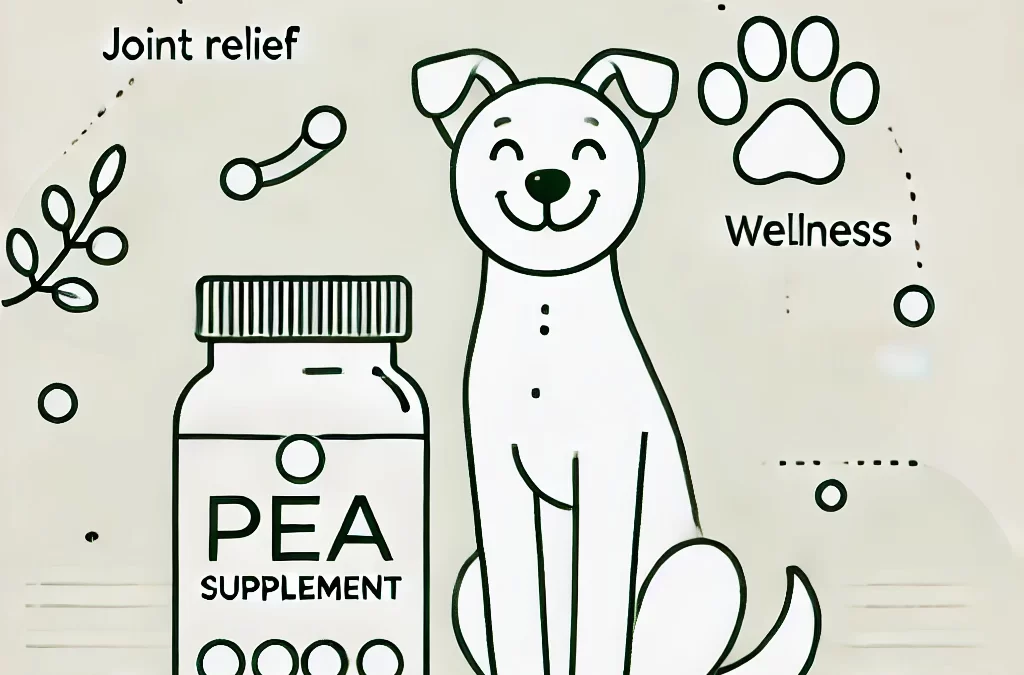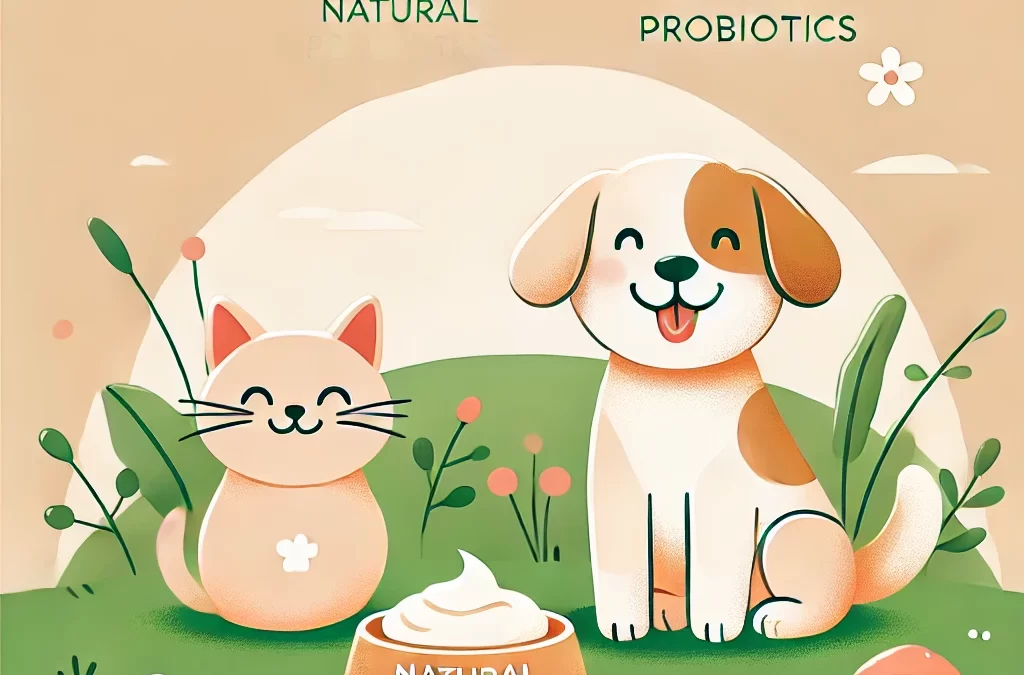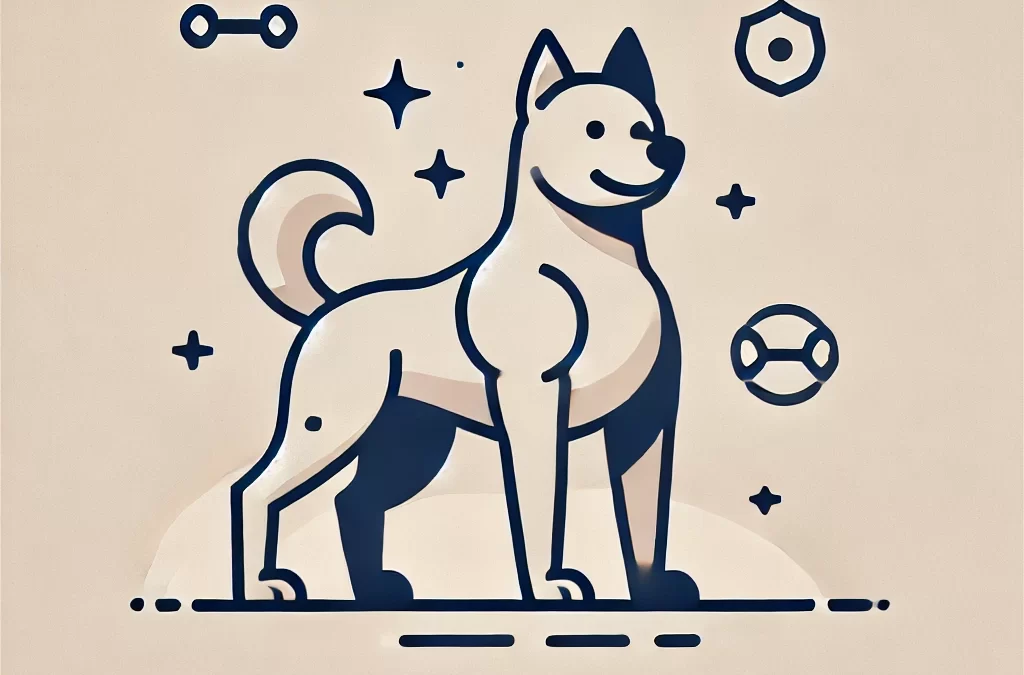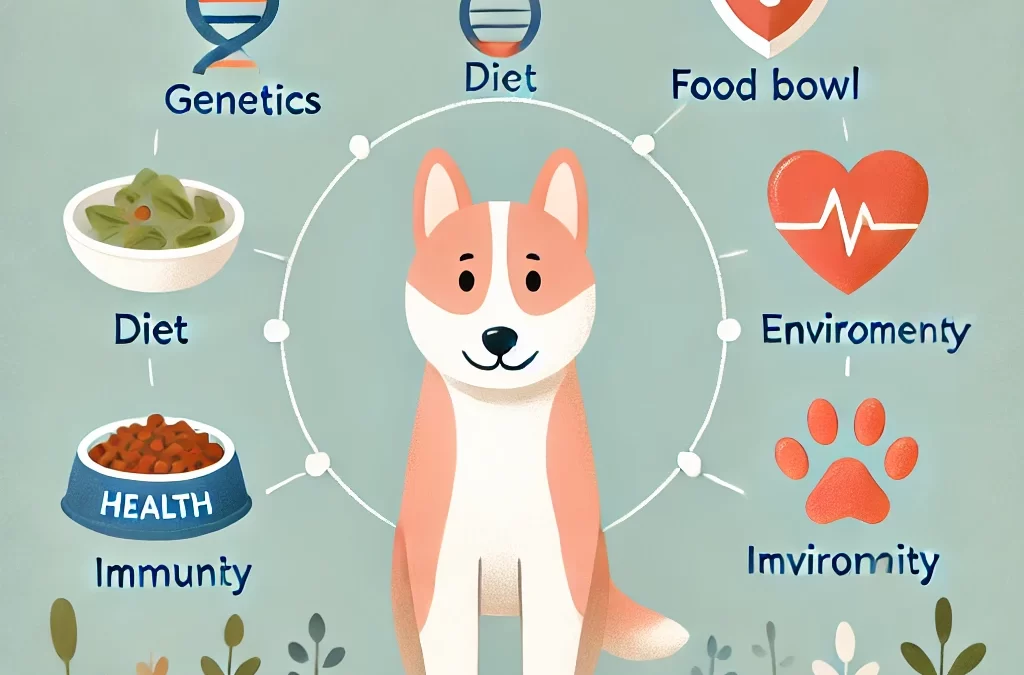
執筆者 TCMVET | 2024年11月13日 | 食と健康
パルミトイルエタノールアミド(PEA)は、その天然の鎮痛作用と抗炎症作用により、犬のケアの世界で人気が高まっています。もともと体内で生成される脂肪酸アミドとして発見されたPEAは、脳や免疫系を含むさまざまな組織に存在するエンドカンナビノイド様化合物です。卵や大豆などの食品に含まれるこのユニークな化合物は、人間と動物の両方において、痛みの管理をサポートし、炎症を軽減する潜在的な効果があることがわかっています。しかし、それは私たちの犬の仲間にとって何を意味するのでしょうか?
PEA とは何ですか? なぜ犬にとって有用なのですか?
PEA は、炎症や痛みに対する反応として、人間と犬の体内で自然に生成されます。内因性化合物である PEA は、エンドカンナビノイド システムと連携して、精神作用を起こさずに炎症や痛みの知覚を調整します。このため、特に長期使用の場合、従来の医薬品に比べてペットにとってより安全な代替品となります。
犬にとってのPEAの主な利点:
- 痛みの緩和: PEA は神経系の受容体と相互作用し、不快感を軽減する自然な手段を提供します。
- 抗炎症作用: 体の免疫反応に作用して炎症を軽減し、関節炎、皮膚炎、その他の炎症性疾患に苦しむ犬に効果があります。
- Improved Quality of Life: PEA は痛みや炎症を軽減することで、可動性、エネルギー レベル、全体的な健康状態を改善する可能性があります。
PEA はどのように機能しますか?
他の鎮痛剤とは異なり、PEA は痛みの信号を直接ブロックしません。代わりに、「アントラージュ効果」と呼ばれるものに作用し、痛みや炎症を調節する自然なプロセスを強化します。その作用を簡単に説明します。
- カンナビノイド受容体との相互作用PEA は免疫系内のカンナビノイド受容体 (CB2 受容体) と間接的に相互作用し、バランスの取れた免疫反応を促進します。
- 炎症酵素の阻害: 炎症を促進する酵素を阻害し、体の自然治癒力がより効果的に働くようにします。
- 肥満細胞の安定化PEA は、傷害や炎症に反応してヒスタミンを放出する免疫細胞である肥満細胞を安定させ、炎症に関連する不快感を軽減します。
PEA は犬のどのような症状の管理に役立ちますか?
PEA は、さまざまな慢性疾患を抱える犬に効果がある可能性があります。
- 関節炎: 抗炎症作用により、関節の炎症や硬直に悩む犬に効果があります。
- Skin Conditions慢性皮膚炎を患っている犬は、かゆみや炎症が軽減されることがあります。
- 神経疾患: いくつかの研究では、PEA は過剰に活動する神経細胞を落ち着かせることで、神経関連の痛みを抱える犬に効果があるかもしれないと示唆されています。
- 手術後の回復PEA の鎮痛作用は、手術後の回復を早め、痛みの管理をサポートする可能性があります。
PEA を安全に使用するには: 用量と注意事項
PEA は一般的に忍容性が良好ですが、安全なアプローチに従うことが重要です。
- 獣医に相談する: 特に犬が他の薬を服用している場合は、PEA を犬の日常の食事に取り入れる前に必ず獣医師に相談してください。
- ゆっくり始めましょう: PEA を少量ずつ摂取し、反応がないか監視してください。PEA は通常、錠剤、粉末、または噛める形で提供されており、体重に基づいて投与量が推奨されます。
- 観察して調整する: 犬の反応を監視し、獣医の監督下で必要に応じて投与量を調整してください。
あなたの犬に適したPEAサプリメントを選ぶ
すべての PEA サプリメントが同じというわけではありません。PEA 製品を選択するときは、次の点に注目してください。
- 純度と品質: 純度が検査され、汚染物質が含まれていないサプリメントを選択してください。
- 微粉化形態この形態の PEA は生物学的利用能が高く、犬の体内により効果的に吸収されます。
- 犬専用製品一部のブランドでは、適切な投与量と配合を保証するために、ペット専用に PEA を設計しています。
最終的な考察: ペットケアにおけるPEAの将来
より多くのペットオーナーが愛犬の生活を豊かにするための自然な選択肢を求める中、PEA は有望な選択肢として目立っています。痛みの緩和と炎症管理に対する PEA の多面的なアプローチは、高齢のペット、慢性疾患のペット、そして健康のために安全で優しいサポートを必要とするあらゆる犬に役立ちます。
研究が進み、ペットに特化した処方が増えれば、PEA はまもなくホリスティック ペット ケアの定番となるかもしれません。独自のメカニズムと実証済みの安全性により、従来の医薬品の副作用なしに犬の快適さと活力をサポートする、現実的で革新的な選択肢となります。

執筆者 TCMVET | 2024年11月13日 | 食と健康
人間と同様、ペットもプロバイオティクスから大きな恩恵を受けることができます。プロバイオティクスは、腸の健康、免疫、全体的な健康をサポートする「善玉菌」です。市販のプロバイオティクスは人気がありますが、天然のプロバイオティクスも効果的で総合的なアプローチとして注目されています。この記事では、天然のプロバイオティクスとは何か、どこで見つけられるか、そしてペットの健康を自然に高める方法について詳しく説明します。
1. ペットのための天然プロバイオティクスとは何ですか?
- 意味天然プロバイオティクスは、天然発酵食品、ハーブ、植物に含まれる生きた有益な細菌です。
- 仕組みこれらの微生物は腸内細菌叢のバランスを整え、消化を改善し、免疫反応を高め、気分にも良い影響を与えることができます。
- 市販のプロバイオティクスとの違い: 天然プロバイオティクスは自然食品から採取され、加工が少なく、より自然に近いソリューションを提供します。
2. ペットにとっての天然プロバイオティクスの利点:
- 消化の改善プロバイオティクスは、食物の分解、栄養素の吸収、ガスや下痢などの消化器系の問題の軽減に役立ちます。
- より強い免疫力: 腸内微生物叢のバランスが整うと免疫システムが強化され、ペットがより効果的に感染症と戦うことができます。
- アレルギー緩和プロバイオティクスを定期的に摂取すると、多くの免疫反応の源である腸の炎症が軽減され、皮膚アレルギーを緩和することができます。
- 気分と行動研究により、腸の健康と気分の間には関連があることが示されており、プロバイオティクスがペットに鎮静効果をもたらす可能性があることが示唆されています。
3. ペットのための天然プロバイオティクスの供給源:
- ヨーグルトとケフィア: プレーンな無糖ヨーグルトやケフィアには、次のようなプロバイオティクスが豊富に含まれています。 ラクトバチルス・アシドフィルス そして ビフィズス菌これらは少量で安全な量であれば、消化器系の健康をサポートすることができます。
- 発酵野菜ザワークラウト(無塩)などの発酵野菜を少量摂取するとプロバイオティクスが摂取できますが、摂取は慎重に行う必要があります。
- アップルサイダービネガー生のリンゴ酢には酵素と有益なバクテリアが含まれていますが、消化不良を防ぐために使用前に薄める必要があります。
- ハーブと土壌生物: タンポポの根やチコリの根などの特定のハーブには、有益なバクテリアを養うプレバイオティクスが含まれています。さらに、ペットに安全な有機土壌に含まれる土壌ベースのプロバイオティクスは、腸の健康を自然にサポートします。
4. ペットの食事に天然プロバイオティクスを取り入れる方法
- 小さく始める: 少量から与え、消化不良や反応がないか監視してください。
- 観察して調整する: ペットに効果があると思われる場合は、獣医師のアドバイスに従って、徐々に頻度や量を増やしてください。
- 一貫性が鍵: 天然のプロバイオティクスを定期的に、一貫して摂取すると、最良の結果が得られる傾向があるため、ペットの日常生活に合った方法を見つけてください。
5. サプリメントよりも天然プロバイオティクスを検討すべき場合
- 敏感なペット向け: 市販のプロバイオティクスサプリメントをうまく摂取できないペットは、天然の供給源によく反応する可能性があります。
- 抗生物質治療後: 抗生物質を服用した後、天然のプロバイオティクスが腸内細菌叢の回復に役立ちます。
- 毎日の健康維持予防的なアプローチをお探しの場合、天然のプロバイオティクスは毎日の健康のための穏やかで効果的な選択肢となります。
6. 安全に関するヒントと注意点
- 添加物を避ける: 砂糖や人工香料などの添加物はペットに害を及ぼす可能性があるため、プレーン、無香料、無糖のプロバイオティクス源を使用してください。
- Consult Your Vet: 特にペットに基礎疾患やアレルギーがある場合は、必ず獣医師にご相談ください。
- 副作用を監視する: まれに、ペットの体が新しいプロバイオティクスに適応する過程で、軽い下痢や膨満感を感じることがあります。
結論
天然のプロバイオティクスは、消化、免疫、さらには気分をサポートし、ペットの健康を総合的に高める方法を提供します。安全で天然のプロバイオティクス源を導入することで、より自然な健康への道が開かれます。忍耐と一貫性があれば、これらの天然のヘルパーは、ペットのより幸せで健康的な生活に欠かせないものになります。

執筆者 TCMVET | 2024年11月13日 | 犬の癌と腫瘍
脂肪の塊、つまり脂肪腫は、特に高齢の犬によく見られる非癌性の腫瘍の 1 つです。飼い主はこうした腫瘍を見つけると不安に思うことが多いのですが、脂肪腫のほとんどは良性です。この記事では、こうした腫瘍がどのような感じか、他の腫瘍と区別する方法、獣医に相談するタイミングについてのヒントを紹介します。
1. 脂肪の塊とは何ですか?
- 脂肪腫の定義脂肪腫は、通常、高齢犬や太りすぎの犬に発生する、皮膚の下に形成される柔らかい脂肪沈着物です。
- 一般的な場所: 通常は胴体、脇の下、手足に見られますが、さまざまな場所に現れることがあります。
- 原因正確な原因は完全にはわかっていませんが、年齢、品種、遺伝、体重に関連している可能性があります。
2. 脂肪の塊の感触:
- 柔らかくて動きやすい: 脂肪腫は一般的に柔らかく、少しグジュグジュとしていて、皮膚の下で生地の塊のような感触です。軽く押すだけで簡単に動かすことができるため、硬くて動きにくい腫瘍と区別できます。
- 痛くない嚢胞や膿瘍とは異なり、脂肪腫は神経や関節を圧迫しない限り痛みを伴いません。
- 一貫した質感脂肪腫は通常、全体的に同じ感触で、均一で生地のような質感をしています。
3. 脂肪腫と他の種類のしこりの違い:
- Cysts嚢胞は脂肪腫の均一性とは異なり、より硬い場合が多く、液体で満たされ、中央に涙点がある場合もあります。
- 膿瘍これらは通常、痛みを伴い、触ると温かく感じられ、赤みを伴うこともよくあります。
- 癌性腫瘍: 悪性のしこりは硬く感じられ、固定されていることが多く、急速にまたは不規則に大きくなることがあります。腫瘍は形が不規則であったり、硬く感じたりすることがあります。
- 線維腫これらの良性腫瘍は脂肪腫よりも硬く、動きにくいですが、通常は無害です。
4. いつ心配すべきか?
- 成長率しこりが急速に大きくなったり、形が変わったり、痛みが出たりした場合は、すぐに獣医に相談することをお勧めします。
- 場所に関する懸念関節の近くや可動性に影響する領域にあるしこりは、除去または監視が必要になる場合があります。
- 複数のしこり: 複数の脂肪腫は一部の犬種ではよく見られますが、新しいしこりが急速に現れる場合は、獣医による検査を検討してください。
5. 脂肪腫の診断:
- 獣医検査獣医師は触診によってしこりが脂肪腫であるかどうかを確認できます。
- 穿刺吸引法(FNA)より確実な診断のために、FNA では腫瘍から細胞を採取して分析し、腫瘍が良性であるか、さらに調査が必要かを明確にすることができます。
6. 脂肪腫は除去すべきですか?
- 手術が必要な場合一般的に、脂肪腫は不快感を引き起こしたり、動きを制限したり、過度に大きくなったりしない限り、そのまま放置されます。
- 低侵襲オプション: 脂肪吸引やステロイド注射などの新しい方法は、場合によっては脂肪腫の縮小に役立つ可能性があります。
7. 脂肪腫を減らすための予防と健康のヒント:
- 健康的な体重を維持する肥満は脂肪腫の既知の危険因子です。
- 定期検診: 定期的に獣医の診察を受けることで、新たな腫瘍の早期発見と監視が可能になります。
- バランスの取れた食事と運動: バランスの取れた食事と継続的な運動は肥満を予防するのに役立ち、脂肪腫の発生リスクを軽減する可能性があります。
結論 犬の脂肪の塊は心配になりますが、多くの場合は無害で、対処も簡単です。脂肪腫の感触、原因、症状を理解することで、飼い主はペットの健康について十分な情報に基づいた判断を下すことができます。犬の塊について不安がある場合は、安心のために必ず専門家のアドバイスを求めてください。

執筆者 TCMVET | 2024年11月12日 | 犬の癌と腫瘍
犬の筋肉増強、筋力強化、怪我からの回復を助けたいと考えている飼い主にとって、筋肉増強サプリメントは魅力的に思えるかもしれません。すべての犬に標準的ではありませんが、これらのサプリメントは特定の犬種、エネルギーの高い犬、作業犬、さらには回復中の犬にも役立ちます。ここでは、犬の筋肉増強サプリメントの利点、注目すべき主な成分、安全で効果的な製品を選択するためのヒントについて説明します。
1. 犬にとって筋肉が重要な理由
健康な筋肉系は、活動的な犬や運動能力の高い犬だけでなく、すべての犬にとって不可欠です。筋肉は関節をサポートし、持久力を高め、全体的な可動性を維持します。アジリティ、狩猟、その他の高強度の活動に従事する犬にとって、強い筋肉は怪我を防ぎ、パフォーマンスを向上させるのに役立ちます。さらに、高齢の犬、手術から回復中の犬、関節炎などの特定の症状を持つ犬は、筋肉のサポートによって体力を維持し、不快感を軽減できます。
2. 筋肉増強サプリメントを検討すべき人は誰ですか?
筋肉増強サプリメントはすべての犬に必要なわけではありませんが、次のような犬には有益です。
- 活動的な品種: ボーダーコリー、ジャーマンシェパード、ラブラドールなどの犬種は、生まれつきエネルギーが旺盛で、計画的な運動ルーチンで元気に育ちます。
- 働く犬: 警察犬、軍用犬、介助犬には、高度な身体能力が求められることがよくあります。
- シニア犬: 老犬は時間の経過とともに筋肉量が減少する可能性があります。サプリメントは筋肉の緊張を維持し、関節の健康をサポートします。
- 回復中の犬たち: 手術や怪我から回復中の犬は、体力と運動能力を回復するために追加のサポートが必要になる場合があります。
3. 注目すべき主要成分
筋肉増強サプリメントはすべて同じではありません。成分の利点を理解することで、高品質の製品を選ぶことができます。筋肉の健康をサポートできる主な成分は次のとおりです。
- アミノ酸: タンパク質の構成要素である L-カルニチンや L-グルタミンなどのアミノ酸は、筋肉の発達と回復を助けます。これらは、犬が引き締まった筋肉を作ったり維持したりするために不可欠です。
- クレアチン: クレアチンは、人間のボディビルディングによく使われますが、犬の筋肉パフォーマンスを向上させる天然化合物です。特に、短距離走や敏捷性トレーニングなど、短時間のエネルギーの爆発に効果的です。
- オメガ3脂肪酸: これらの健康的な脂肪は炎症を軽減することが知られており、運動後の回復に役立ちます。オメガ 3 は関節の健康もサポートするため、筋肉に重点を置いたサプリメントに追加すると効果的です。
- タンパク質源: 鶏肉、魚、牛肉などの高品質のタンパク質源は、筋肉の成長と修復に不可欠な栄養素を提供します。一部の筋肉増強サプリメントには、脱水タンパク質パウダーが含まれています。
- 関節サポート化合物: グルコサミンやコンドロイチンなどの成分は、直接筋肉を増強するものではありませんが、筋肉を増強して維持したい活動的な犬にとって不可欠な関節の健康をサポートします。
4. 適切な筋肉増強サプリメントの選択
サプリメントを選ぶときは、犬にとって最も安全で効果的な製品を提供するために、以下のヒントを考慮してください。
- 犬専用の製品を選択してください: 人間の筋肉増強サプリメントの中には犬に有害なものもあります。犬の生理学に合わせて特別に配合された製品を探してください。
- 高品質の原材料を確認する: 増量剤、人工香料、保存料が少ないほど良いです。良いサプリメントは、全成分が豊富に含まれていなければなりません。
- 獣医に相談してください: サプリメントを始める前に、特に犬に何らかの既往症がある場合は獣医に相談してください。
- ゆっくり始めましょう: 新しいサプリメントを徐々に与えて、犬の反応を観察し、推奨用量を超えて与えないようにしてください。
5. サプリメント vs. 自然食
サプリメントは犬の筋肉の健康を高める便利な方法ですが、バランスの取れた食事が基本です。赤身の肉、卵、一部の魚を含む高タンパク質の食事は、自然に筋肉の健康をサポートします。サプリメントは、適切な栄養と適切な運動習慣と組み合わせると最も効果的です。
6. 運動とトレーニングによる筋肉の増強
サプリメントだけでは筋肉を鍛えることはできません。よく計画された運動習慣が不可欠です。次のような全身を動かす活動に重点を置きましょう。
- ウェイトトレーニングウォーキングまたはハイキング: 軽いバックパックを装着することで、健康な犬に優しい抵抗を与えることができます。
- 敏捷性トレーニング: 犬の精神を刺激しながら、柔軟性を促し、筋力を鍛えます。
- 水泳: 衝撃の少ない運動である水泳は、筋肉の成長と関節の健康に最適です。
結論: より強く、より健康な犬を育てる
筋肉増強サプリメントは、筋力増強が必要な犬にとって貴重な補助食品となりますが、バランスの取れた栄養と運動と組み合わせると最も効果的です。高品質のサプリメントを慎重に選択し、獣医師に情報を提供することで、犬の筋肉の健康をサポートし、犬が活動的で強く、人生の冒険に備えられるようにすることができます。

執筆者 TCMVET | 2024年11月12日 | 犬の癌と腫瘍
がんは人間にとってもペットにとっても最も困難な病気の 1 つであり、特に愛犬が罹患すると悲痛な思いをします。しかし、犬のがんの原因と発症の仕組みを理解することで、予防策が明らかになり、早期発見への洞察が得られます。がんを確実に予防する方法はありませんが、主な要因、新たな研究、リスクを軽減する方法について探ってみましょう。
1. 遺伝学:品種と家族歴の影響
一部の犬種は、がんになりやすい傾向があります。たとえば、ゴールデンレトリバー、ボクサー、ロットワイラーなどの犬種は、遺伝的に特定のがんを発症しやすい傾向があります。研究では、遺伝的変異がこれらの傾向に重要な役割を果たしていることが示唆されています。 犬の遺伝学と疫学 特定の犬種には、腫瘍にかかりやすい共通の遺伝的特徴があることが明らかになりました。その結果、犬の血統によってリスクが高まる可能性があり、特定の犬種の飼い主は定期的な獣医の診察に特に注意する必要があります。
2. 環境要因: 発がん物質と日常の毒素
犬も人間と同じように環境毒素にさらされています。一般的な原因としては、受動喫煙、特定の洗浄剤、農薬、汚染などが挙げられます。犬は床や屋外の表面と密接に接触するため、有害物質を摂取したり吸い込んだりしやすく、知らないうちに毒素を体内に取り込んでしまいます。また、特定の発がん物質への曝露と犬のがんリスク増加との間に直接的な相関関係があることを示す証拠も増えています。
実用的な洞察: 曝露を最小限に抑えるには、天然の洗浄剤を選び、ペットの周りでの喫煙を避け、犬の遊び場に農薬がないことを確認することを検討してください。
3. 食事:がん予防における栄養の役割
犬の食事は、免疫機能から細胞の健康まで、あらゆる面で犬の健康に多大な影響を与えます。質の悪い食べ物、つまり増量剤や人工添加物の多い食べ物は、細胞の変異や炎症を引き起こし、がんを引き起こす可能性があります。一方、抗酸化物質、オメガ脂肪酸、天然タンパク質を豊富に含むバランスの取れた食事は、細胞の修復と免疫防御をサポートします。
食事に関する推奨事項: 犬の栄養ニーズに合わせて、高品質、オーガニック、または自家製の食事に切り替えることを検討してください。最適な食事については、必ず獣医師に相談してください。
4. ホルモンの影響と生殖の健康
ホルモンは体内の強力な化学伝達物質であり、腫瘍の成長に影響を与える可能性があります。研究では、適切な年齢で避妊または去勢すると、乳がんや精巣がんなどの特定のがんのリスクを軽減できることが示されています。ただし、これらの処置のタイミングは重要です。早期の避妊または去勢は、骨肉腫などの他のがんのリスク増加と関連しているからです。
バランスのとれた決定: 犬の避妊手術または去勢手術の最適な時期については、犬種や個々の健康状態によってタイミングが異なる可能性があるため、獣医師に相談してください。
5. 感染症とウイルス
特定の感染症やウイルスは発がん性があることが知られています。犬の場合、犬パピローマウイルスなどのウイルスはイボの原因となり、まれに悪性腫瘍に発展することもあります。さらに、慢性炎症を引き起こす感染症は、時間の経過とともに細胞の変化や変異を引き起こし、がんを引き起こす可能性があります。
6. 老化:避けられない要因
年齢は、犬のがんの最も重要なリスク要因の 1 つです。獣医治療の向上により、犬の寿命は延びていますが、年齢とともにがんになる可能性も高まります。犬の細胞が老化するにつれて、DNA 損傷を修復するメカニズムの効率が低下し、がんの突然変異が起こりやすくなります。
より健康的な生活のための予防策とライフスタイルの変化
すべてのがんが予防できるわけではありませんが、生活習慣を少し変えるだけでリスクを軽減できます。長期的な健康を促進できる予防策をいくつかご紹介します。
- Routine Veterinary Care: 定期的な検査は、異常な成長や早期の警告サインを発見するのに役立ちます。
- 健康的な食事の選択: 必須栄養素が豊富で、人工添加物や増量剤を含まない食品を選びましょう。
- 清潔な環境を維持する: 無毒の製品を使用し、犬が有害な化学物質にさらされないようにしてください。
- 定期的に運動する: 犬を活発に保つことは、病気と闘うために不可欠な強力な免疫システムをサポートします。
結論: 知識は私たちの最大の防御
犬のがんの原因となる要因を理解することで、情報に基づいた選択ができ、可能な場合はリスクを軽減することができます。遺伝や年齢は私たちのコントロールの及ばないものです。しかし、犬がより健康で長生きできるように対策を講じることはできます。常に注意を払い、質の高いケアを優先し、毒素のない環境を育むことで、犬ががんにかからない人生を送る可能性を最大限に高めることができます。





